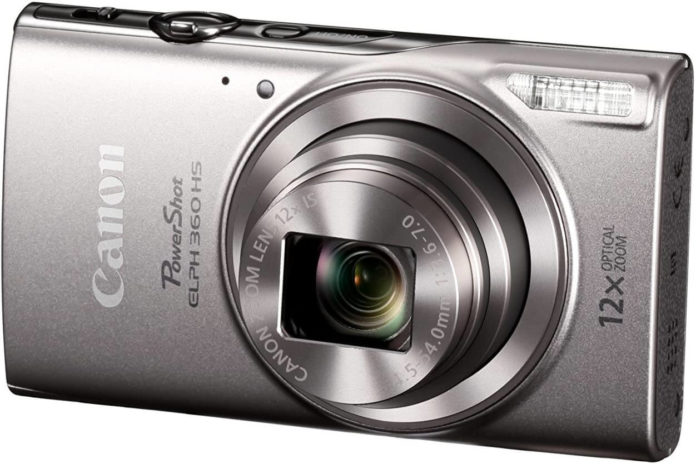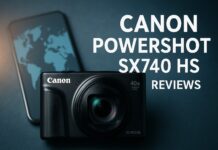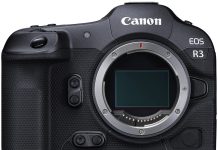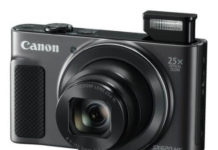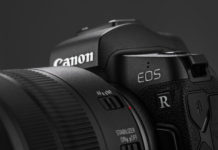I’ve had the Canon PowerShot ELPH 360 HS in my camera bag rotation since 2017, and despite Canon discontinuing it years ago, I still grab it for specific situations. This review addresses both why this camera earned a loyal following when it launched in 2016 and whether it still makes sense today – especially on the used market where most people encounter it now.
The honest answer: The ELPH 360 HS was actually quite impressive for its era. In 2016, smartphones were still struggling with low-light photography, and this camera offered real optical zoom in a genuinely pocketable form factor. While it shows its age compared to modern alternatives, it still delivers surprisingly good results for casual photography when you consider its original design goals.
Contents
- What the Canon ELPH 360 HS Actually Is
- Real-World Performance: The Photographer’s Perspective
- Design, Handling, and User Experience
- Who Should Consider the Canon ELPH 360 HS Today?
- How the ELPH 360 HS Compares to Alternatives
- Buying Used: What to Check
- Practical Tips for ELPH 360 HS Owners
- Long-Term Reliability and Support
- Final Verdict: A Solid 2016 Camera That Still Has Value
What the Canon ELPH 360 HS Actually Is
The ELPH 360 HS sits in Canon’s ultra-slim point-and-shoot category – cameras designed to slip into pockets without bulk. Released in 2016, it represented Canon’s attempt to compete against smartphones by offering features phones couldn’t match: real optical zoom and better low-light performance.
Quick specifications:
- 20.2MP 1/2.3″ CMOS sensor
- 12x optical zoom (25-300mm equivalent)
- DIGIC 4+ image processor
- f/3.6-6.9 aperture range
- ISO 80-3200
- 3.0″ fixed LCD (no touchscreen)
- 1080p video at 30fps
- Built-in Wi-Fi and NFC
- Battery life: ~180 shots
- Dimensions: 3.9″ × 2.3″ × 0.9″
- Weight: 5.2 oz (147g) with battery
The key selling point was always the 12x zoom in a genuinely pocketable form factor. Most ultra-slim compacts offered 5x or 8x zoom. The ELPH 360 HS gave you 300mm equivalent reach – enough for wildlife at moderate distances, sports from the stands, or concerts where you’re twenty rows back.
Table could not be displayed.Real-World Performance: The Photographer’s Perspective
Image Quality: Better Than Expected (With Caveats)
The 20.2MP sensor produces surprisingly sharp images at base ISO in good light. I’ve made 11×14″ prints from ELPH 360 HS files that look excellent at normal viewing distances. The DIGIC 4+ processor handles JPEG processing competently – colors are accurate, sharpening is subtle rather than aggressive, and white balance is reliable.
Where it shines: Outdoor photography in daylight. Landscapes, travel snapshots, casual portraits in good light, architecture – the ELPH 360 HS delivers clean, detailed images that were quite competitive for its price point in 2016.
Understanding the limitations: The 1/2.3″ sensor was standard for compact cameras of this era. By today’s standards, this creates some constraints, but in 2016, this was acceptable trade-off for the ultra-slim design:
1. Dynamic range. Shoot a scene with bright skies and dark shadows, and you’ll either blow out the highlights or lose shadow detail. This was typical for compact cameras of this generation – the technology simply wasn’t as advanced as today’s sensors.
2. Low-light performance. Image quality degrades noticeably above ISO 800. By ISO 1600, noise becomes prominent. This was actually decent performance for a 2016 compact camera – many competitors struggled even more in low light.
3. Background blur. The maximum aperture (f/3.6 at wide angle) combined with the small sensor means background blur is minimal. This was expected for ultra-slim compacts – if you wanted shallow depth-of-field, you’d buy a larger camera.
My practical advice: The ELPH 360 HS works best as a daylight camera with occasional indoor capability. Keep ISO under 800 when possible. Use the built-in flash indoors (it’s actually quite good for fill light). This camera was designed for casual photography, and it excels within those parameters.
The 12x Zoom: Actually Useful
The 25-300mm equivalent zoom range is the ELPH 360 HS’s genuine superpower. I’ve photographed wildlife at national parks, musicians on stage, my kids’ soccer games, and architectural details on buildings – all situations where zoom mattered more than ultimate image quality.
Optical zoom versus digital zoom: This camera has both. Use only the optical zoom (12x). Digital zoom is interpolation – the camera crops and enlarges the image, degrading quality. The optical zoom uses actual lens elements to magnify the scene. Image quality at 300mm equivalent is surprisingly good, especially considering how slim this camera is.
Image stabilization performance: Canon’s Intelligent IS system works well at moderate zoom levels. I can handhold sharp shots at 150mm equivalent consistently. At full 300mm zoom, technique matters – brace yourself, use burst mode, and expect some keepers mixed with soft images. A tiny camera shooting at 300mm equivalent while handholding is challenging physics.
Practical zoom use: The zoom is genuinely useful but has limitations. For casual wildlife (deer at 50 feet, birds in your yard), it’s adequate. For serious wildlife photography, it’s insufficient – you’d need 400-600mm minimum. For travel (capturing distant architectural details, isolating subjects in crowds), it’s excellent.
Autofocus: Fast in Good Light, Struggles Otherwise
The contrast-detection autofocus system is quick and accurate in good lighting. Point at a subject in daylight, half-press the shutter, and the camera locks focus almost instantly.
Where it falters: Low-contrast scenes (overcast days, dim indoor lighting, low-light conditions) cause hunting. The camera racks focus back and forth searching for contrast to lock onto. This is inherent to contrast-detection AF – it needs light and contrast to function.
Face detection works reliably and improves focus accuracy for casual portraits. The camera finds faces, prioritizes them for focus, and generally nails sharpness on eyes. This feature alone improves keeper rate significantly for family snapshots.
Continuous autofocus for video: Adequate but not impressive. The camera adjusts focus during video recording, but transitions aren’t always smooth. For static scenes it’s fine. For moving subjects, expect some focus pulsing.
Video Capability: Surprisingly Decent 1080p
1080p video at 30fps with stereo sound is genuinely usable. I’ve shot family events, travel videos, and casual documentary-style footage with the ELPH 360 HS, and the results are perfectly acceptable for sharing online or watching on TV.
Video quality: Sharp, well-exposed, with accurate colors. The image stabilization works during video, reducing shakiness noticeably. Autofocus adjusts during recording but isn’t always smooth – manually setting focus distance before recording sometimes yields better results.
Limitations: No 4K (it’s a 2016 camera), no manual exposure control during video, and no microphone input. This is a point-and-shoot video experience – press record, the camera handles everything, results are good but not filmmaker-grade.
Who should use ELPH 360 HS for video: Anyone needing casual video capability bundled with their still camera. Families documenting events. Travelers wanting video clips without carrying dedicated equipment. Skip it if: You need 4K, manual exposure, external audio, or filmmaker-level control.
Battery Life: Era-Appropriate but Limited
180 shots per charge was actually reasonable for ultra-slim compacts in 2016. While it seems limited by today’s standards, this was typical for cameras prioritizing size over battery capacity.
Why it’s limited: Ultra-slim camera design requires ultra-slim battery (NB-11L, 800mAh). The LCD screen (which is always on since there’s no viewfinder) drains power constantly. This was the trade-off for the pocketable form factor.
Practical solution: Buy at least one spare battery. Keep one charging while shooting. Rotate batteries throughout the day. This was standard practice for compact camera users in this era.
Battery management tips: Disable Wi-Fi when not actively transferring images. Reduce LCD brightness. Turn the camera completely off between shooting sessions rather than letting it auto-sleep. These measures help extend shooting time.
Design, Handling, and User Experience
Build Quality: Plastic But Solid
The ELPH 360 HS is entirely plastic construction – no metal body, no weather sealing, no premium materials. However, the plastic feels solid rather than cheap. I’ve carried this camera in pockets, bags, and backpacks for years without damage beyond minor scuffs.
Reality check: This is a $200-class camera (when new). Expecting magnesium alloy construction is unreasonable. The build quality is appropriate for the price class and intended use. Treat it reasonably and it lasts.
Color options are silver, black, and purple. I have the silver version, which shows wear less than black would.
Ergonomics: Compromised by Size
Ultra-slim design creates handling challenges. The camera is thin enough that there’s nowhere for fingers to grip securely. I added a small adhesive grip pad to the front (sold for smartphones) which dramatically improved handling security.
The buttons are small. If you have large hands or poor dexterity, operating the controls is frustrating. The four-way controller on the back is particularly finicky – hitting the exact direction you want requires precision.
Who handles it well: People with smaller hands. Anyone comfortable with smartphone-sized devices. Who struggles: Large hands. Anyone with arthritis or dexterity issues.
Menu System and Controls
Canon’s menu system is straightforward but not intuitive. There aren’t enough physical controls, so most adjustments require diving into menus. Want to change ISO? Menu. Adjust white balance? Menu. Change focus mode? Menu.
The learning curve: Expect 2-3 days of fumbling before the menu structure becomes familiar. After that it’s manageable but never fast. Dedicated buttons for common adjustments would dramatically improve user experience, but they’d add bulk – the trade-off for ultra-slim design.
Shooting modes: Auto mode works well for casual photography. Program mode gives some control. There’s no aperture priority, shutter priority, or manual mode – this isn’t an enthusiast camera. Scene modes (portrait, landscape, sports, etc.) are available and sometimes helpful.
The LCD Screen: Adequate but Not Special
The 3.0″ LCD has 461,000 dots – adequate resolution but not impressive. It’s usable in most lighting but washes out in bright sunlight. The screen is fixed (no tilt or articulation) and not touch-enabled.
Framing accuracy: What you see is approximately what you get. The screen is reliable for composition. For critical framing, shoot slightly wider than needed and crop in post.
Wi-Fi and NFC: More Useful Than Expected
Built-in Wi-Fi was novel in 2016. In 2025 it’s expected but still useful. The Canon Camera Connect app (iOS and Android) allows wireless image transfer to smartphones for immediate sharing.
How I actually use it: Shoot throughout the day, then transfer favorite images to my phone while sitting at dinner or back at the hotel. Post to social media from my phone without involving a computer. It’s convenient.
The frustrations: Initial connection setup is finicky. The app interface is dated. Transfer speeds are slow (Wi-Fi b/g/n, not ac). But once configured, it works reliably enough.
NFC (Near Field Communication) simplifies pairing with NFC-enabled Android devices – tap phone to camera, connection established. It doesn’t work with iPhones. I’ve used it twice. Not essential.
Who Should Consider the Canon ELPH 360 HS Today?
Consider it if you:
- Need ultra-portable camera with real zoom capability
- Shoot primarily in good lighting (outdoors, well-lit indoors)
- Want simple operation without learning complex controls
- Are comfortable buying used equipment (it’s discontinued)
- Already own other cameras and need a lightweight backup
- Travel frequently and want pocketable camera with better capability than phones of its era
- Understand this is a 2016 camera with 2016 capabilities
Look elsewhere if you:
- Shoot frequently in low light (concerts, evening events, dim restaurants)
- Need manual exposure control
- Want RAW file capability
- Need excellent battery life
- Require 4K video
- Have large hands (handling will frustrate you)
- Want current warranty and support (camera is discontinued)
- Expect 2025-level performance from a 2016 camera
How the ELPH 360 HS Compares to Alternatives
Versus Smartphones (iPhone, Pixel, Galaxy)
Modern smartphones produce better image quality than the ELPH 360 HS in most situations. Computational photography (HDR, night mode, portrait mode) gives phones capabilities this camera can’t match.
The ELPH 360 HS’s advantage: Real optical zoom. Phones either have fixed lenses or 2-3x optical zoom. The ELPH 360 HS’s 12x optical zoom provides reach smartphones can’t replicate. Digital zoom on phones degrades quality severely – optical zoom maintains image quality.
My recommendation: Use your smartphone for most photography. Carry the ELPH 360 HS specifically when you need zoom capability. Don’t expect it to outperform your phone otherwise.
Versus Other Used Compact Cameras
If you’re shopping used compacts in the $80-150 range, alternatives include:
Canon PowerShot SX620 HS (~$120 used): 25x zoom in similarly compact body. Better zoom but marginally slower lens. Very similar overall capability.
Sony Cyber-shot WX500 (~$150 used): 30x zoom, similar sensor size, slightly better low-light performance. Excellent alternative if you need more reach.
Panasonic Lumix ZS50 (~$130 used): 30x zoom, integrated electronic viewfinder (huge advantage in bright sun), similar image quality. Better overall package if you can find one.
Canon PowerShot G9 X (~$200 used): Larger 1″ sensor dramatically improves image quality but only 3x zoom. Different category – image quality versus zoom reach.
New Camera Alternatives (If You Want Current Models)
If you want to buy new rather than used:
Canon PowerShot SX740 HS ($380-430): 40x zoom, 4K video, better autofocus, improved LCD. Canon’s current compact superzoom. Significantly more expensive but vastly more capable.
Sony ZV-1F ($450): Vlogging-focused compact with excellent video, better low-light sensor, no zoom. Different purpose but represents modern compact camera capability.
Honestly, smartphones: If you don’t specifically need optical zoom, flagship smartphones (iPhone 15, Pixel 8, Galaxy S24) produce better images than budget compacts. Use phone + occasional compact camera rental for zoom situations.
Buying Used: What to Check
Since the ELPH 360 HS is discontinued, you’ll buy used. Here’s what to verify:
Shutter count: Point-and-shoots don’t typically display shutter count, but cameras with heavy use may show worn buttons or scratched LCD screens.
Lens condition: Inspect the front lens element for scratches or fungus. Extend the zoom fully and check for dust inside (some dust is normal, heavy dust indicates poor storage).
LCD screen: Look for scratches, dead pixels, or image retention. Minor scratches are tolerable. Dead pixels or retention indicate problems.
Sensor check: Shoot a photo of a white wall at various ISO settings. Inspect for dark spots (sensor dust) or bright pixels (sensor defects). Minor dust is cleanable. Pixel defects are permanent.
Battery condition: Ask about battery performance. Original batteries from 2016-2018 have degraded significantly by now. Factor in spare battery costs ($15-40 depending on genuine vs third-party).
Accessories included: Should include battery, charger, USB cable. Memory card is nice but not essential. Original box and manual don’t matter for functionality.
What to expect: Since this camera is discontinued, you’ll find it on the used market. Prices vary based on condition, included accessories, and seller. Check the current market value through the affiliate links below to see what’s available in your area.
Practical Tips for ELPH 360 HS Owners
Maximizing Image Quality
Keep ISO low: Use ISO 80-400 whenever possible. Enable Auto ISO but set maximum to 800. Above ISO 800, quality deteriorates rapidly.
Use good light: This camera thrives in daylight. Shoot near windows indoors. Avoid dim restaurants unless you accept compromised quality.
Stabilize at full zoom: Brace against walls, posts, or your body when shooting at 200-300mm equivalent. Shutter speeds should be 1/320 second minimum at full zoom.
Shoot RAW? You can’t. ELPH 360 HS is JPEG-only. Get exposure right in-camera because recovery latitude is limited.
Battery Management
Carry minimum 2 spare batteries: One in camera, two in bag. Rotate through them.
Charge overnight: The included charger is separate from camera, so you can charge batteries while sleeping.
Disable Wi-Fi: Unless actively transferring images, Wi-Fi drains battery unnecessarily.
Full power cycles: Occasionally drain battery fully and recharge completely to maintain calibration.
Recommended Accessories
Spare batteries: Essential for extended shooting. Look for NB-11L batteries – both genuine Canon and quality third-party options are available.
Protective case: Neoprene sleeve or hard-shell case prevents scratches and impacts.
Screen protector: Tempered glass protector prevents LCD scratches.
Memory card: SanDisk Extreme 32GB minimum. Class 10 or UHS-I for reliable video recording.
Adhesive grip pad: Smartphone grip tape on the front dramatically improves handling.
Lens cleaning kit: Microfiber cloth and lens pen for keeping optics clean.
Long-Term Reliability and Support
The ELPH 360 HS was discontinued around 2019-2020. Canon no longer manufactures parts or provides official support. Repair services may decline to work on it due to parts availability.
What this means practically: If the camera breaks, it’s essentially disposable. Factor this into your purchase decision. At $80-120 used, it’s an acceptable risk. At $150+, you’re paying too much for unsupported technology.
Common failure points:
- Lens mechanism jamming (usually from impacts or debris)
- LCD screen failure
- Battery charging circuit issues
None are economically repairable. If serious problems develop, replacement is cheaper than repair.
Final Verdict: A Solid 2016 Camera That Still Has Value
The Canon PowerShot ELPH 360 HS was well-designed for its era. In 2016, it offered impressive zoom capability in an ultra-slim package at an accessible price point. Today, it remains a capable secondary camera for specific uses.
The honest assessment: This camera represents 2016 technology, and that’s perfectly fine. It doesn’t match modern smartphone computational photography, but it offers real optical zoom that phones still can’t replicate. It lacks modern features like 4K video, but the 1080p quality was quite good for its time.
Why I still carry one: The 12x optical zoom in a pocketable body fills a niche my phone and mirrorless cameras don’t. When hiking and I need ultra-light kit, the ELPH 360 HS delivers zoom capability at 5.2 ounces. For family gatherings where I want candid shots without carrying pro gear, it’s adequate and unobtrusive.
The smart buying decision:
If you understand this is a 2016 camera with 2016 capabilities: It can still serve specific purposes well, especially if you find one in good condition with reasonable pricing.
If you need manual controls, RAW capability, or cutting-edge image quality: This isn’t your camera. Look at used enthusiast compacts (Canon G-series, Sony RX100) or entry-level mirrorless cameras.
If you need simple zoom capability in minimal size and weight: The ELPH 360 HS still delivers competently within its design parameters.
It’s not the most advanced camera, but it was never meant to be. It’s honest about its capabilities, delivers consistently within its limitations, and represents good value for what it offers. Sometimes that’s sufficient.
My recommendation: Consider it for appropriate uses (travel backup, casual zoom, lightweight hiking camera) if you find one in good condition at reasonable pricing. Check the current market value through the links below to see what’s available. Otherwise, look at modern alternatives or use your smartphone for most photography needs.
Last update on 2025-12-19 / Affiliate links / Images from Amazon Product Advertising API


